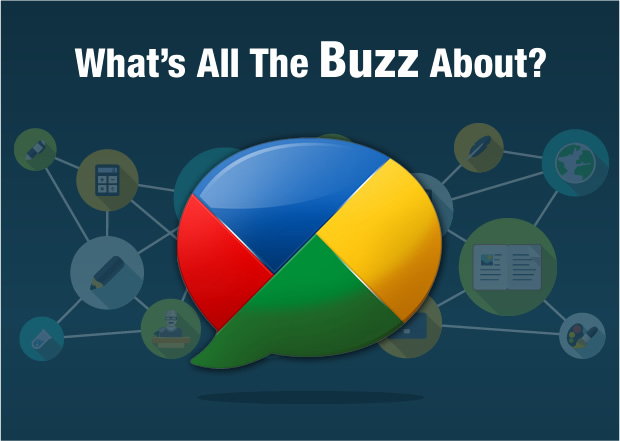The web is abuzz with talk of Google Buzz.
So what is Buzz – simply put it’s a personal aggregator that is coupled to your Gmail account. Buzz is to email what Wave will eventually be to real-time collaboration around email thread and embedded documents or media.
All in all a very interesting new tool to experiment with, so what could such a tool do for eLearning? Google keeps a lot of these features are in perpetual beta, it’s early days yet and who knows how this new tool will evolve. However, even its current form, it’s a significant reinvention of email. Buzz has the potential for great impact because a large bulk of individuals in the workplace still use email as the primary communication tool, It will continue to be a very powerful tool used for sharing ideas, information, links, pictures, video and almost any digital format that can be attached and exchanged. The ability to see threaded conversations with people you actually interact with is another key feature of email.
Email was user to user or user to groups of users; the Buzz sharing metaphor is different, more Web 2.0 – allowing one to post messages that can be shared with multiple individuals at a time. Another very cool thing is that the people you “follow” are auto-generated from the people you tend to email. If you communicate with them, they seed your buzz cloud. Over a period of usage, as you comment, like or dislike buzz entries that come from those you follow, the buzz cloud adapts.
Buzz can also aggregate content from other social sharing sites, Flicks, Picasa, Twitter, and YouTube. Buzz emulates or rather brings some features of Google Wave to Gmail. Every Buzz item can be turned into a conversation (like in Friendfeed or Wave.) People can comment on your Buzz, comment on your comments, or @ reply to you as in Twitter.
All in all, these features integrated into a single platform have much potential for eLearning. As a learner, a tool that lets me connect socially and which integrates with a communication service I use everyday has exceptional value.
As a learning designer, I was especially interested in the ‘asymmetric follow’ feature of Buzz as O’Reilly describes it. Buzz implemented this feature and I see it having great value in workplaces. If the system can help me follow interesting individuals in the workplace without actively seeking them out, and based on my activities within Buzz, it essentially builds parts of the network for me. This to me is a key feature and might be worth emulating by learning technology providers.
How do you see Buzz helping in workplace learning?



















